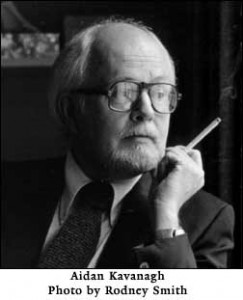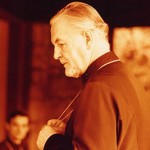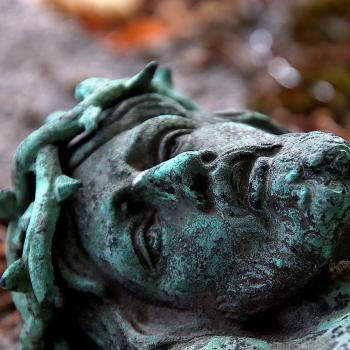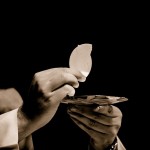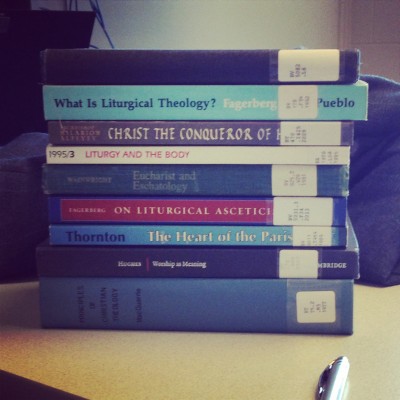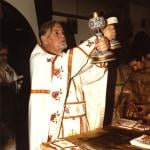This post is a continuation of my weekly series, “Fridays with Fr. Kavanagh.” You can read the first post here, complete with biographical information about Fr. Kavanagh for those who have not yet had the pleasure to read his works.
Continuing in my re-journey through On Liturgical Theology, chapters 3 and 4 deal with the church and what it means for the church “to do” the world. In particular, chapter 4 includes some of the most poignant and beautifully probing prose about the current start of worship and ecclesiology. I only left a few sentences without underlining the first time I read through this section and have since now underlined almost every word. The Church is an inversion of what we find in the world, it is a paradox to those who have not yet seen its beauty and majesty.
To begin, Leonid Ouspenksy wrote about the “analogous inversion of things in the Gospel.” That is, the perspective of icons and the message of the Gospel is different than, alternative to, and upside down compared to the narratives and values of this world. While the world—used loosely—teaches one to focus on the self, the inner person, the Gospel suggests otherwise. Kavanagh states:
“There [in the Gospel], everything is in the same inverse perspective: the first shall be last, the powerless rather than the powerful shall inherit the earth, and the humiliation of the cross is the supreme victory.” p. 41
The message of the Gospel runs against the grain of our individualistic, consumerist culture in which the dream is to live the good life by caring for yourself above everything and everyone else. People climb the social, political, and professional ladders in their lives in order to make a name for themselves, to earn more money, and to achieve their wildest dreams. While Babel was the collective effort of a people to become equal to God the current obsession with the self is the conscious and willing effort to replace God with who you see in the mirror.
This is why the Gospel is radical. This is why the Gospel is challenging. This is why we struggle to live according to Jesus’ commands and example: we don’t want to die to ourselves daily and take up the cross; we don’t believe that life only comes through death; we cannot comprehend that to be the least and the last is to be held tightly in the loving embrace of our almighty Father.
He continues later in the chapter:
“One cannot know the Church without having access to its paradoxical and inversionary nature, a nature no less paradoxical and inversionary than the fact of a Creator becoming creature, the Source of all becoming the child of an unmarried mother, the impassible submitting to suffering and death.” p. 49
All of the “wrong people” are getting into the Kingdom of God. Jesus came to heal the sick, bind up the wounded, feed the hungry, seek the lost, bring back the strays, and to tell the marginalized and unimportant that they were invited to the eschatological banquet table.
The sacraments and sacramental worship of the Church thus point to this inversionary nature as well. Bread and wine, the most simple and basic meal, becomes Body and Bloody mysteriously. Water suddenly becomes passage into the death and resurrection of Christ and membership in his Body. The Church becomes more than the building of the people gathered together, it is the extension of Christ’s body into the world as a reconciling agent, joining him in the restoration of all things. Things are not as they appear in God’s Kingdom, there is more than what meets the eye, and we should be celebrating wildly that sinners like us are made new again.
“The tradition has never seen the Church as having any purpose or work different from Christ’s own. The Church’s concerns have always been with the Gospel translated into act, matter, time, and space, with the various cultures the Church has touched being renovated as an inevitable result not directly striven for.” p. 50-51

